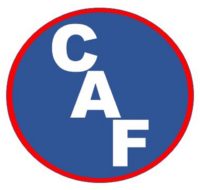The CompressedAirFoam.com web site only provides basic information regarding Class B concentrates and is NOT designed to provide enough information to be considered adequate training in the use of Class B foams.
Operations in the use of Class B Foams on hydrocarbon fuels requires separate, intensive specialized training to DO NO HARM.
Do not buy a Class B product and place it on the engine expecting it to perform to your expectations on the 1st Class B emergency. Get the appropriate certified training. Research and DIY Performance evaluate the Classs B products prior to purchase. Then, play with the purchased product under various scenerios to insure the product meets the department’s needs and expectations. Periodically play with it again and again to always be prepared.
BASICS
Class B Foam concentrates are designed strickly for Class B Hydrocarbon fuels. Historically, Some of the B Foam concentrates contained polly florinated chemicals to enhance its ability to form a film over a “contained” fuel to suppress flammable/combustible vapor emissions. B concentrates could be formulated to handle alcohol & non-alcohol products. The old Class B foams suppressed the flammable vapors using a bubble blanket on top of the film.
Class B foams are now banned from using any flourinated chemicals. The new foams only provide a bubble blanket to cool the fuel and suppress the flammable vapors. The days of the film under the bubble blanket are gone.
This loss of the film results in new challanges in controlling “contained” Class B fuel situations. The bubble blanket is NOT self healing. Any damage or break in the bubble blanket can result in the escape of flammable and explosive vapors. The bubble blanket must now be monitored more closely. Additional foam must be available to re-apply to keep the vapors suppressed.
The bubble blanket also does not flow the same as the old film products flowed. This means that there are new training challenges to deal with in both the application and expectations of the new foams.
MAKING CLASS B FOAM
Making Finished B-Foam is identical to making A-Foam – (W + Conc (=Sol) + A + A = F). The difference being the type of Concentrate (Conc) and the % Solution (W + Conc). B-Foam is not a detergent, and is formulated for Class B Hydrocarbon Fuels and is generally mixed at 1%, 3% or 6% Solution.
TRAINING TOPICS
The below is a not-all-inclusive list of potential topics all firefighters should understand prior to using Class B Foam on hydrocarbon fuels. It is not a matter of “What you don’t know won’t hurt you”. It is a matter of “What you don’t know can kill you”.
- What B-Foam Does/Doesn’t do
- How is it different from A-Foam
- Contained Fire – What does this mean and why doesn’t foam work on non-contained fire
- AR vs Non-AR
- How long does a bucket stay good? How old is this concentrate?
- E-80 Fuel – what’s so important about this?
- What is fuel burn rate – list some common fuels – gas, diesel, av gas,
- How much water is needed to control fire
- How much water is needed to sustain vapor suppression
- Proportioner limitations – 1-3-6% sol
- Concentrate Viscosity – why is this important
- I have 1 bucket – what can I save?
Click here for a quick study on potential foam volume needs!!
Below are a few (not all-inclusive) scenerios that should be incorporated in firefighter Class B Specialized Training:
- Car Fires
- Gas Station Fires
- Fuel Tanker Fires
- Small Aircraft Fires
- Large aircraft fires/remote – off airport crashes
- Small Boat fires
- LPG Yard Fires
- Chemical Warehouse Fires – where does water flow go, how much foam, can you dike it?
Here are several links that might be useful in your research into a Class B Foam program. Note that CompressedAirFoam.com does not necessarily endorse these sites. It is up tot he department to determine (through research, evaluation, training and practice) if the information is of use.






































